Description
Very unique helm with the fundamental parts (2-piece skull, bevor, and lower visor)
apparently from a cuirassier helm. The visor was altered at some time with additional vent
holes and slits and the bulging eye slits. An upper visor adapted from another helmet was
added at some point and a second skull of 2 pieces, also likely adapted from another
helmet, was bolted over the original skull. The low comb of the original skull was
damaged in antiquity and the additional skull pieces were likely added as reinforcement,
though neither covers the damaged comb itself. Interestingly, these added skull parts
overlap the visor pivots, which were replaced at some point, though are only visible from
the inside. There is a hand-painted white “I” and “L” on the inside of the skull, probably
some kind of an inventory marking for the games. Many of the helms used in the Gioco
del Ponte (game of the bridge) were derived from original parts existing at the time in local
armories. The damage and subsequent addition of the additional skull reinforcements
attests to the brutality of these games. All the major parts of this unique helm appear to
be very old and lamination and hand forging is visible in numerous locations.
History of the Gioco del Ponte
The first known edition of the Gioco del Ponte dates back to February 22, 1568. This
mock combat has its origins in antiquity, evolving into a battle for mastery of the bridge
over the River Arno between residents of Tramontana on the north bank and Mezzogiorno
on the south. Similar to the tournaments popular throughout medieval and Renaissance
Europe, it was on a much grander scale with hundreds of opponents on each side fighting
simultaneously. Except for not allowing sharpened weapons, this “game” was often as
brutal as genuine combat and fatalities were not infrequent. The original games reached
their height of popularity in the 18th C, but were banned for over 100 years for their
brutality after the Queen of Etruria attended in 1807. The games were revived in 1932,
but with many revisions designed to reduce injuries. Today there is no combat and the
competition is largely a tug-of-war. Such games were not limited to those in Pisa, though
they are the best known.




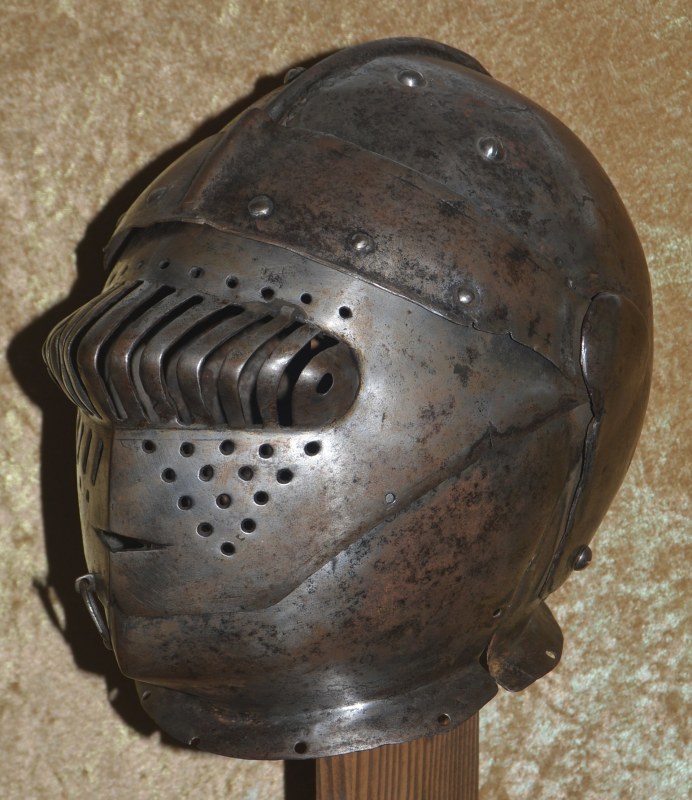



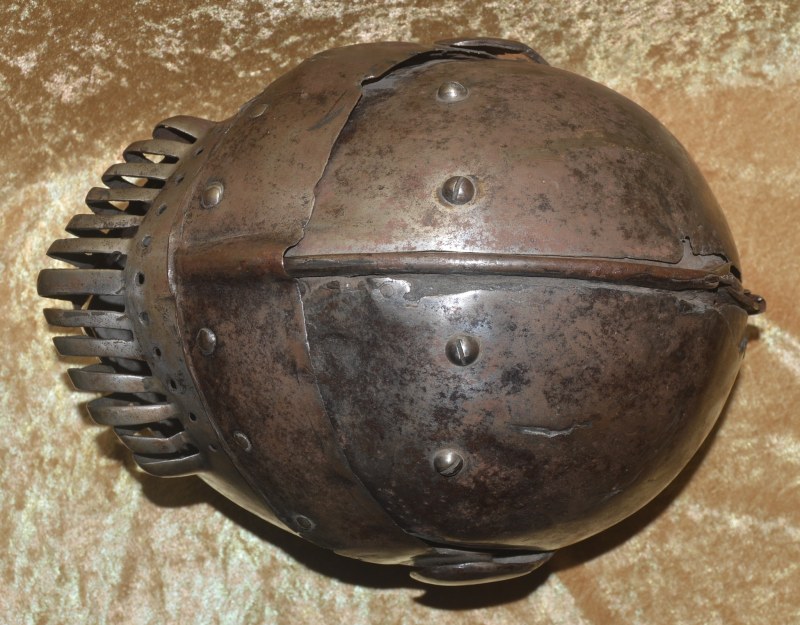

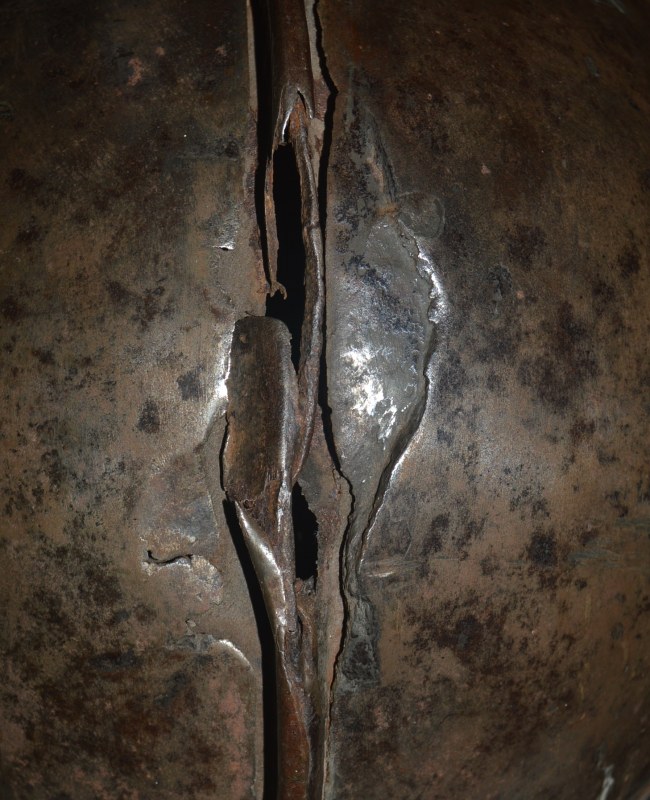

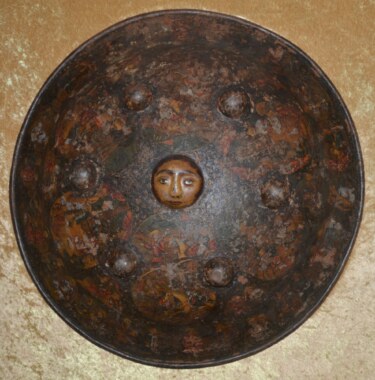 Large Painted Shield, North India, Late 18th C
Large Painted Shield, North India, Late 18th C 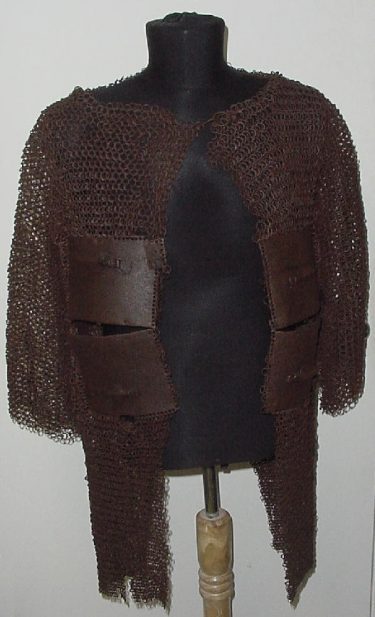 Indian Mail and Plate Shirt, Deccani, 17th C
Indian Mail and Plate Shirt, Deccani, 17th C 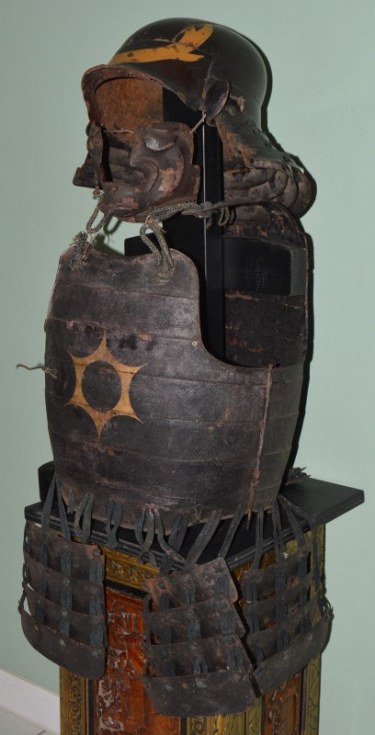 Composite Japanese Armor, 17th/19th C
Composite Japanese Armor, 17th/19th C 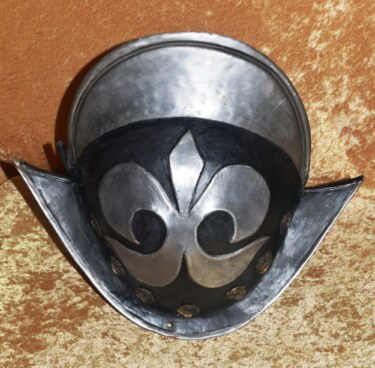 German Black & White Morion, Munich Town Guard, early 17th C
German Black & White Morion, Munich Town Guard, early 17th C